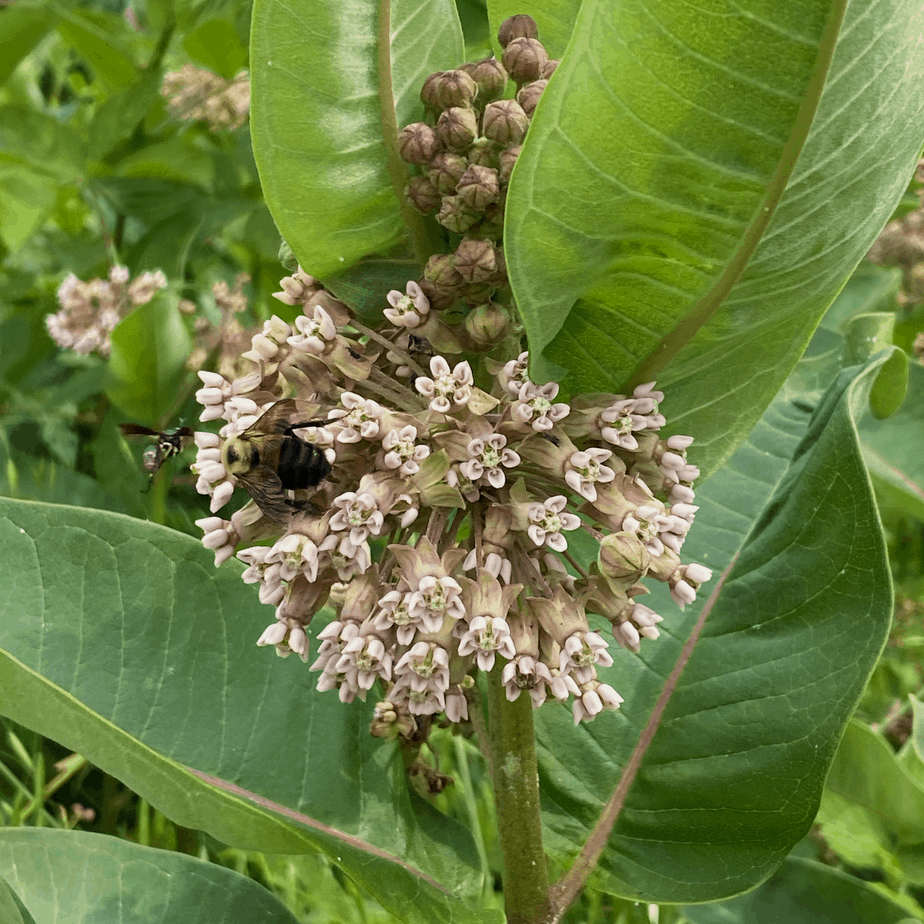The plants in the photos on this page are common milkweed. I found it when I was out on one of my many hikes / walks. I am always on the lookout for topics to write blog posts about. Common Milkweed is really anything but common. It is a quite lovely plant with spectacular flowers and unique seed pods. The colony shown in these photos was brimming with insect activity. When I first saw it, I had no idea what it was. I’m so glad that I did a little research. It’s such an interesting plant.
Where does Common Milkweed Grow?
Many species of milkweed are native to the US. It is a member of the Asclepiadaceae family. There are 115 species of milkweed. Common milkweed grows in full sun, shade, or a combination of both.
You can find common milkweed across the US from the east coast to the Rocky Mountains, north to Canada, and south to the gulf. Different species thrive in different geographical areas.
Growing Patterns of Asclepias syriaca L.
Common milkweed grows to about 5’.
It forms colonies by producing rhizomes. As a result, it usually grows in patches.
Leaves are 6-8” long and 2-3.5” wide. They are smooth on top and fuzzy on the underside.
Flowers are small and occur in clusters. They are pinkish white with various green or purple undertones.
Fruits are large pods. They open and disburse 50-100 seeds that have fluffy white parachutes similar to Dandelion heads.
Insect Activity & Monarch Butterflies
Milkweed flowers attract a lot of insects. While they were blooming, the patch was teaming with all sorts of bees and bugs. Even after the blooms faded, the insect activity continued.
I didn’t realize that common milkweed is specifically used by Monarch Butterflies. They complete their entire life cycle on the milkweed plant. First, females lay their eggs on the leaves. Once the eggs hatch, they solely feed on milkweed leaves. Finally, milkweed is known as a host plant for Monarchs. As a side note, all Monarch butterflies are orange. To find out more, visit the Monarch Joint Adventure.
To find out more about common milkweed visit the Lady Bird Johnson Wildlife Center or the USDA Forest Service.




